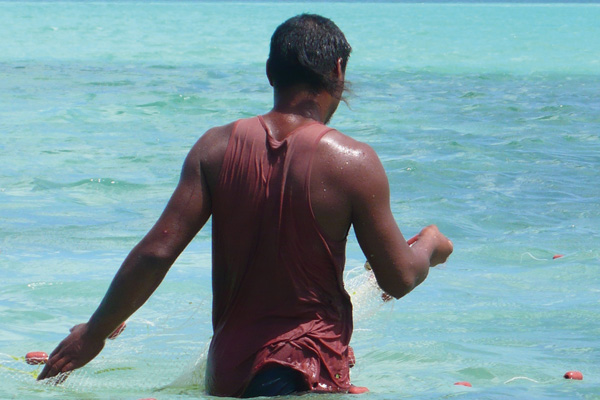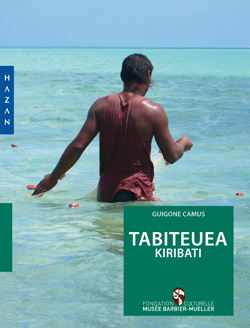
Cultures of islanders such as the Gilbertese people in Kiribati are in danger of being lost due to climate change and migration
Interview with Laurence Mattet, Managing Director and member of the Council of the Fondation Culturelle Musée Barbier-Mueller
1. Why did the Barbier-Mueller Foundation commit “to witness the forgotten people"?
We were inspired by the famous quote from Amadou Hampaté Bâ: "In Africa, when an old man dies, it’s a library burning."
The Barbier- Mueller Cultural Foundation and the Barbier- Mueller Museum, established with the financial support of the watchmaker Vacheron Constantin, award scholarships to young and experienced researchers to carry out anthropological study missions with people whose traditions are threatened. Funding is also provided to publish research results.
The best-known ethnic groups have been studied by anthropologists for quite a long time. However, there has been little emphasis on smaller groups, even if they possess a strong individual identity, culture, mythology, traditions, etc...
In the absence of a writing system, these cultures may fall into oblivion without a trace. This will be an inestimable loss!
2. Why did the Foundation decide to present the example of Kiribati?
Guigone Camus, a PhD student at the École des Hautes Etudes en Sciences Sociales (EHESS) [1], drew our attention to the urgent need to conduct research in this country because of the environmental situation. Indeed, these atolls and their heritage are, in the near future, highly threatened by sea-level rise.
Guigone submitted to us her project of historical and ethnographic study of Tabiteuea Island in Kiribati in order to provide visibility to the importance of oral tradition in defining the Gilbertese identity and culture.
The Scientific Committee of the Foundation immediately agreed to finance this mission to study people whose culture is endangered. The field work took several months, and Guigone’s research results have just been published.
 3. Can we say that migration is one of the facets of cultural diversity?
3. Can we say that migration is one of the facets of cultural diversity?
We are now undergoing major changes due to globalization, demographic issues, ageing of Western societies and shortage of labor that lead to migration movements.
What seems certain is that society is increasingly diverse and that multiculturalism represents an opportunity and a strength for humanity. Opening one’s culture to the "other" is an undeniable and mutual enrichment.
This is what the two Barbier-Mueller institutions are working on:
- The Museum: Its vocation has been for 37 years to preserve, study, exhibit and publish, with the intention to promote “non- European" art collections.
- The Cultural Foundation: Established in 2010, its goal is to send researchers to the field to collect information on endangered cultures before it is too late. Indeed, an entire cultural heritage is being lost irretrievably, especially in the case of oral traditions and with the threat of young people lacking interest in their cultural heritage (myths of creation, stories of their deities, etc. . .).
4. Mobility is part of the traditional way of life of small island States; can we also understand migration as an opportunity to transmit and reinvent cultures instead of seeing it as a factor of cultural extinction?
This may be the case; however the goal of the Barbier-Mueller Museum and of the Cultural Foundation is first and foremost to bring visibility to the arts and cultures of peoples without writing traditions through exhibitions and publications. We have a duty to pass on cultural heritage!
I will also add that the Cultural Foundation is the only institution in the world to have set up such a systematic program for endangered cultures.
5. Which new projects are under development or will be supported by the Foundation in relation to forgotten people and issues of mobility of populations and communities?
This year, we will publish two monographs. The first is devoted to the Nazé Lijiazui people of China in the Yunnan region and the research was conducted by a young PhD student, Marie-Pascale Milan. The second publication will look at the people called Bati Kelusi, as only fifteen individuals of this group continue to live in isolation in the mountains of the island of Seram in Indonesia. Stéphane Barelli just completed his research and his book should be released by the end of the year. In 2015, the Jiye people of the Sudan and the Altai people of Siberia will be honored.
We strongly encourage students and young researchers to submit new projects!
More information is available on www.barbier-mueller.ch/ and www.fondation-culturelle-barbier-mueller.org/
[1] Guigone Camus has also produced a piece for this Newsletter (insert hyperlink